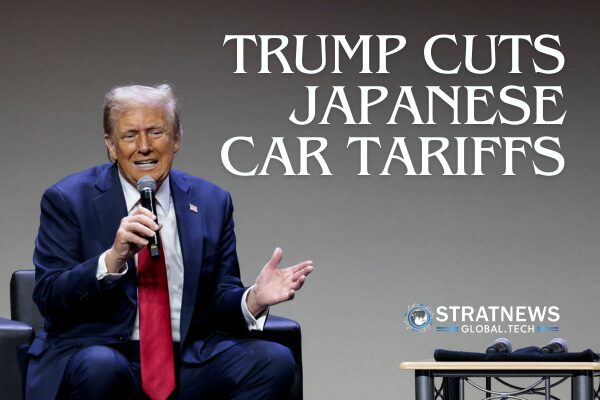Trump Finalises Lower Tariffs on Japanese Car Imports Amid Trade Deal
US President Donald Trump has signed an executive order that formally reduces tariffs on Japanese automobile imports and other products, offering long-awaited relief to Japan’s export-heavy economy. The move comes after months of negotiations and finalises a deal announced in July, which includes a massive $550 billion Japanese investment in US-based projects.
The new tariffs, lowered to 15% from the previous 27.5%, will take effect seven days after the order is officially published. This change is expected to stabilise the Japanese auto sector, which had faced months of uncertainty since the initial announcement.
Broader Deal Covers Agriculture, Aircraft, and Defence
The executive order confirms that items currently taxed at over 15%, such as beef, will not face additional tariffs, while those under 15% will be adjusted to meet the new standard. These changes will be applied retroactively from 7 August. The order also states there will be no new tariffs on commercial aircraft and their parts.
As part of the broader agreement, Japan has committed to increasing US rice imports by 75% and purchasing $8 billion worth of US agricultural goods annually. This includes corn, soybeans, fertilisers, and bioethanol, with a focus on sustainable aviation fuel.
The deal also includes Japan’s plan to purchase 100 Boeing aircraft and raise annual defence spending with US firms to $17 billion, up from $14 billion.
Auto Industry Reacts to Tariff Changes
Toyota, which recently estimated a $10 billion impact from Trump’s earlier tariffs, welcomed the clarity provided by the new framework. “While nearly 80% of the vehicles Toyota sells in the US are made in North America, this framework provides much-needed clarity,” the company said.
Shares of Japanese automakers rose slightly following the announcement, while their South Korean rivals fell amid delays in securing similar agreements. South Korea is still waiting for a corresponding executive order that would reduce tariffs on US imports, including vehicles from Hyundai and Kia.
Political Ramifications in Japan
Japanese trade negotiator Ryosei Akazawa, who made ten trips to the US for the talks, expressed relief at the deal’s finalisation. “Finally,” he posted on X, formerly Twitter. Speaking in Washington, he said Japan viewed the order as confirmation of the agreement reached on 22 July.
The executive order also highlighted that the $550 billion Japanese investment in the US will be directed toward projects selected by the US government. These investments, structured as equity, loans, and guarantees, are backed by Japan’s government-owned banks.
Japan will continue pushing for guarantees that it receives the lowest tariff rates on sectors like chips and pharmaceuticals—terms that were not mentioned in the final order.
Leadership Struggles for Japan’s Prime Minister
The trade agreement comes just days before a leadership vote that could decide the future of Japan’s Prime Minister Shigeru Ishiba. His coalition has lost its majority in both houses of parliament due to public frustration over rising living costs and economic stagnation.
Finalising the trade deal may strengthen Ishiba’s case to stay in office, but analysts suggest he still faces a high risk of being ousted. Political consultancy EurAsia Group estimates a 60% chance he will be replaced.
with inputs from Reuters


